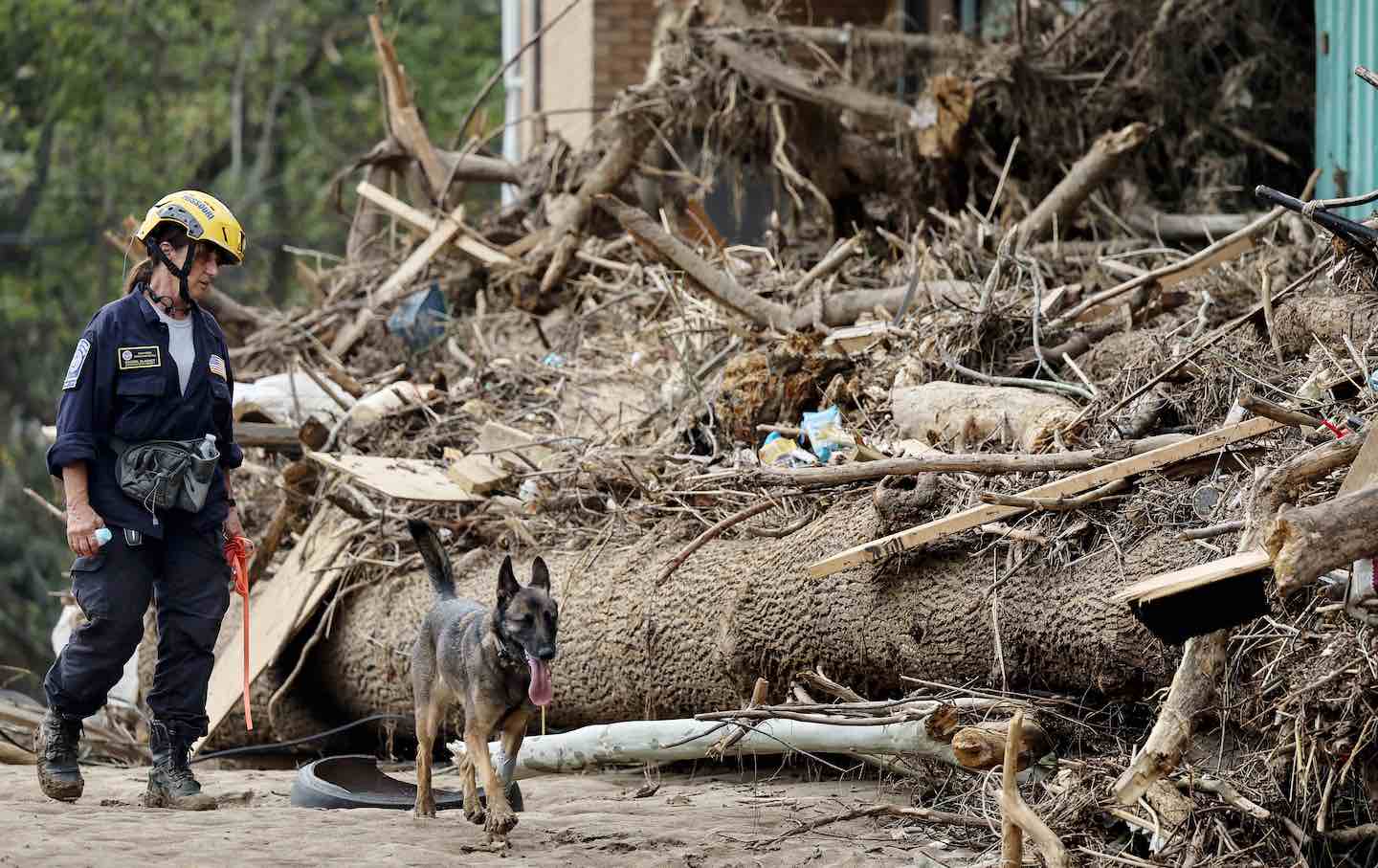[ad_1]
Policy
/
October 10, 2024
Both sides are competing to see who can continue to perpetuate the same old, failed myths about immigration.

Kamala Harris visits the U.S.-Mexico border with U.S. Border Patrol Tucson Sector Chief John Modlin (R) on September 27, 2024 in Douglas, Arizona.
(Rebecca Noble/AFP via Getty Images)
Vice President Kamala Harris and former President Donald Trump are competing over who can appear tougher on immigration, particularly at the US-Mexico border. Their approach is both unfortunate and wrong.
During the last month presidential debateHarris boasted of his support for a border bill that would “put 1,500 additional border guards on the border to help the people who are currently working there do their jobs. [and] more resources should be devoted to prosecuting transnational criminal organizations for arms, drug and human trafficking.”
Current number

Trump, for his part, has repeatedly said, “What [are] allowing these millions of people to come across the southern border,” adding that he would “sign a bill to close the border.” Asked if he would propose the largest domestic deportation operation in the country’s history with the help of the National Guard, Trump said he would also use “local police.” Trump also used derogatory language to describe immigrants (not worth repeating).
We’ve seen this movie before. For 30 years, American presidents of both parties have pursued a “tough” and often deadly policy on the border. They didn’t work. It is time for US leaders to recognize the folly of anti-immigration policies and rethink how to manage borders in a way that respects human rights.
Since Bill Clinton’s presidency, the US government has deliberately used an increasingly punitive and lethal “prevention through deterrence” strategy to discourage migration to the US-Mexico border. First carried out by the Border Guard in August 1994“prevention through deterrence” and its subsequent permutations have been aimed at driving migrants into increasingly life-threatening conditions to dissuade them from crossing the border.
Deterrent policies include increased prosecution and incarceration for minor legal offenses, building border walls, deploying more agents and invasive surveillance technology, and removing people quickly and without due process. The government has it illegally blocked people from applying for asylum, separated children from their parents or carersand forced non-Mexicans to wait months in Mexico until a faulty (by the government’s own admission) phone application for scheduling an immigration appointment – all of this while facing abuse and violence from Mexican criminal groups and corrupt local officials.
These policies may lead to a short-term reduction in border crossings. After the latest action by the Biden administration, we are now seeing fewer encounters with migrants at the US-Mexico border. announcement of a ban on asylum and the enhanced often abusive interdiction efforts by Mexican officials.
But we know from decades of experience that the pendulum will eventually swing back, regardless of how much pain our policies cause. This is largely because deterrence tactics don’t address why people move, which is often to live with family members in the United States or to find a better, safer life for themselves.
And worse, even as the number of encounters decreases, migrant deaths appear to be increasing. Officials from the El Paso sector of the Border Patrol, for example, reported the discovery a record number of human remains in recent months. Instead of discouraging migrants from arriving, these policies encourage them to cross the farthest point and more lethal parts from the border region.
In 2022 (the most recent year for which border-wide data is available), the Border Patrol documented more than 850 human remains located in the border area. The Border Patrol has been recording since 1994 nearly 10,000 human remainsincluding women, pregnant women, and children and young children. Unfortunately, deterrence efforts at the US-Mexico border contribute to the tragic and growing number of deaths and disappearances of people who come to the United States seeking safety, reunification with family members, or a better life.
Regardless of who is president, it is time for the United States to adopt a new approach that prevents unnecessary deaths and is firmly grounded in international human rights and refugee standards, including policies that at least respect the right to life and the human right to family. unit.
For a fraction of the billions of taxpayer dollars spent on border fortification, the U.S. government could instead invest in a law-abiding border management process that brings together government and non-government agencies to establish reception centers at ports of entry with asylum and immigration officers. judges, medical professionals, trauma counselors, child welfare specialists and other humanitarian service providers. Congress should also expand migration pathways that encompass the complex and multifaceted realities of people’s movement.
Popular
“Swipe to the bottom left to see more authors”Slide your finger →
And Americans aspiring to political office should also change their rhetoric and talk more about the immigrant way huge contributions to the United States, including by strengthening the economy, providing health care, and expanding innovative and productive industries.
In doing so, the United States would set an example for other countries to follow.
Can we count on you?
In the next election, the fate of our democracy and our basic civil rights will be on the ballot. The conservative architects of Project 2025 seek to institutionalize Donald Trump’s authoritarian vision at all levels of government should he win.
We have seen events that fill us with fear and cautious optimism—all the while, The Nation he was a bulwark against misinformation and an advocate for bold, principled viewpoints. Our dedicated writers interview Kamala Harris and Bernie Sanders, unpack JD Vance’s shallow right-wing populist appeals, and discuss the path to Democratic victory in November.
Stories like this and the one you have just read are vital at this critical juncture in our country’s history. Now more than ever, we need clear-eyed and in-depth independent journalism to make sense of the headlines and sort fact from fiction. Donate today and join our 160-year legacy of speaking truth to power and raising the voices of grassroots advocates.
In 2024, which will likely be the defining election of our lifetimes, we need your support to keep delivering the insightful journalism you rely on.
Thanks,
The editors The Nation
More from here The Nation

He enjoyed the limelight in 2016 and 2020. Now he refuses to argue and refuses interviews.
John Nichols

The former president, who turned 100 on Oct. 1 and is in hospice care, said he was “just trying to vote for Kamala Harris,” according to his grandson, Jason Carter.
OppArt
/
Colleen Quinn

This year’s Pray Vote Stand summit exposed cracks in Trump’s refusal to pass a national abortion ban.
Amy Littlefield

Democrat or Republican, the next presidency will continue to spell death for others in faraway places.
Ahmed Moor

MAGA partisans, including Donald Trump and Elon Musk, have unleashed their own barrage of disinformation about federal emergency response.
Chris Lehmann

